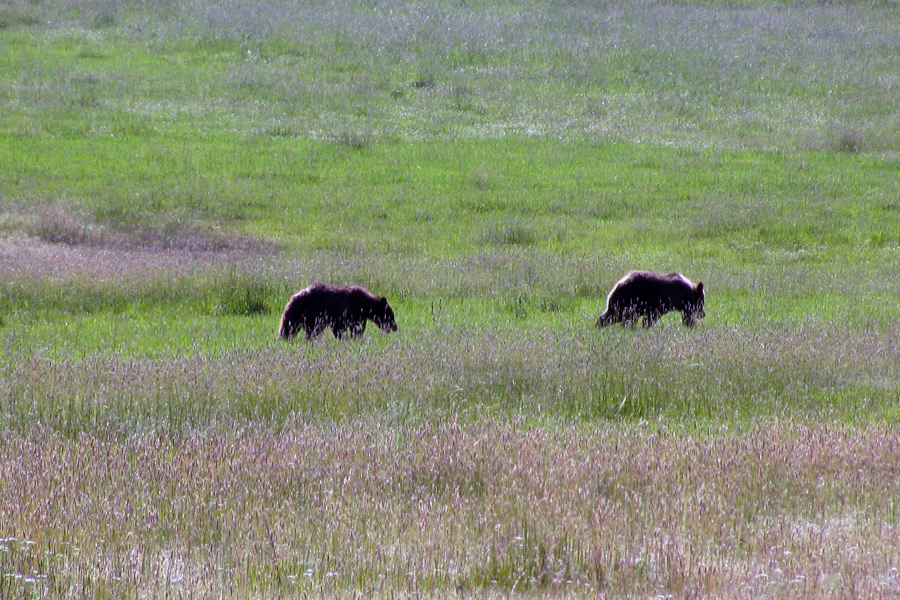In the 46 years since Congress passed the Endangered Species Act, widely regarded as the crown jewel of the nation’s environmental laws, the watershed legislation has led to the recovery of a suite of species that once hung on the brink of extinction.
At the same time, the Endangered Species Act has been the basis for effusive litigation, and critics blame its bureaucratic layers for diverting conservation resources away from imperiled species, while forestalling job-creating timber and mining projects by foisting cumbersome restrictions on the industries. As a result, the Endangered Species Act is at once a token of unprecedented environmental guardianship and the hallmark of a volatile land-use controversy, often reaching a fever pitch in habitat-rich places like Montana.
Those tensions have been on full display in the wake of the Trump administration’s changes to how endangered species rules are implemented, a move that quickly generated lawsuits from conservation groups seeking to preserve the bedrock law, while simultaneously earning praise from conservatives who say the act has been used as a political weapon and has strayed from its original intent.
The environmental groups challenging the Interior Department’s move to change the way species are protected under the Endangered Species Act include Earthjustice, the Sierra Club and the Center for Biological Diversity, while the Whitefish-based Western Values Project filed a separate lawsuit seeking documents related to Interior Secretary David Bernhardt’s communications with clients during his tenure as a lobbyist.
According to Chris Saeger, executive director of the Western Values Project, those documents reveal deep conflicts of interest, including Bernhardt’s alleged pattern of lobbying for clients while he led the Interior Department’s transition team.
“Since day one, David Bernhardt set his sights on doing the bidding of his former lobbying firm and special interest clients at the expense of our public lands,” Saeger said. “We already know that Bernhardt is under investigation for skirting ethics laws, but it remains to be seen just how deep the corruption goes.”
Environmental groups were quick to point out scientific studies showing that without the protections afforded by the Endangered Species Act, an estimated 227 species would have gone extinct. For example, the black-footed ferret was once believed to be extinct, but today there are more than 1,400 in the wild, including populations in Montana. Bald eagles were almost wiped out in the Northern Rockies and are now recovered.
“Gutting one of the most popular, effective, and oldest environmental laws will spell disaster for not only keystone species themselves, but also for the ecosystems that rely on them to remain in balance,” John Mellgren, wildlife program director for the Western Environmental Law Center, said. “This hostility to the environment has never before occurred in modern times, and we will use the full power of the law to prevent these bad-faith rules from undermining our fight against extinction.”
Describing the proposed changes as improvements designed to streamline recovery, the Interior Department says the revisions are meant to clarify the standards for delisting a species and ease the regulatory burden on industry.
U.S. Sen. Steve Daines, R-Montana, said the changes are long overdue.
“This is a win for Montana and the West, and will help restore commonsense, science-based decision making when it comes to the Endangered Species Act,” according to a statement. “These new rules will lead to more transparency, increased recovery of species, greater conservation, and will help take the decision making powers out of the hands of radical activists in the courtroom. I applaud the administration for taking this action.”
The controversy comes at a time when grizzly bears in both the Greater Yellowstone Ecosystem and the Northern Continental Divide Ecosystem are poised for delisting, though Yellowstone grizzlies will remain on the ESA pending the U.S. Fish and Wildlife Service’s appeal of a court order saying the federal agency failed to examine how removing protections would affect species in other ecosystems.
The current proposal to delist grizzlies comes more than four decades after the species was considered near extinct and listed as endangered.
In the 46 years since passage of the Endangered Species Act, wolves and grizzlies have come to represent both the shortcomings and successes of the landmark conservation law, serving as proxy for the federal government and bureaucracy in a state where access to land and resources is viewed as a divine right, while also affording protections to a range of iconic species that were on the verge of blinking out.
But the Endangered Species Act has long been a target of groups who criticize the difficulty of removing recovered species from the list, a reality playing out in the courtroom as state and federal agencies in Montana attempt to delist the grizzly.
